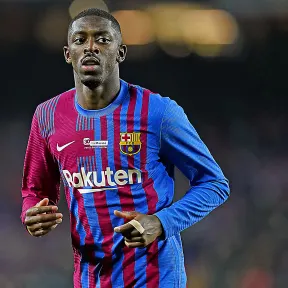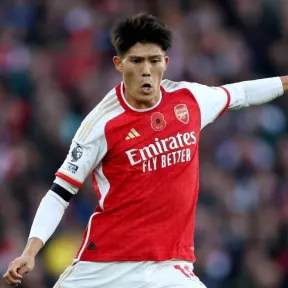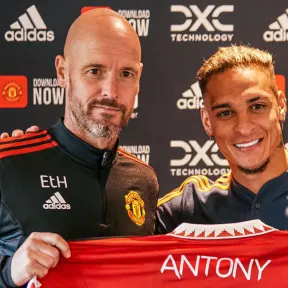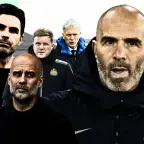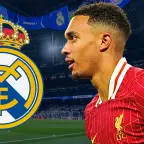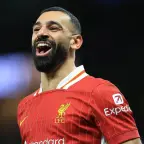Possession, pressing and positivity - How Potter's Chelsea will look
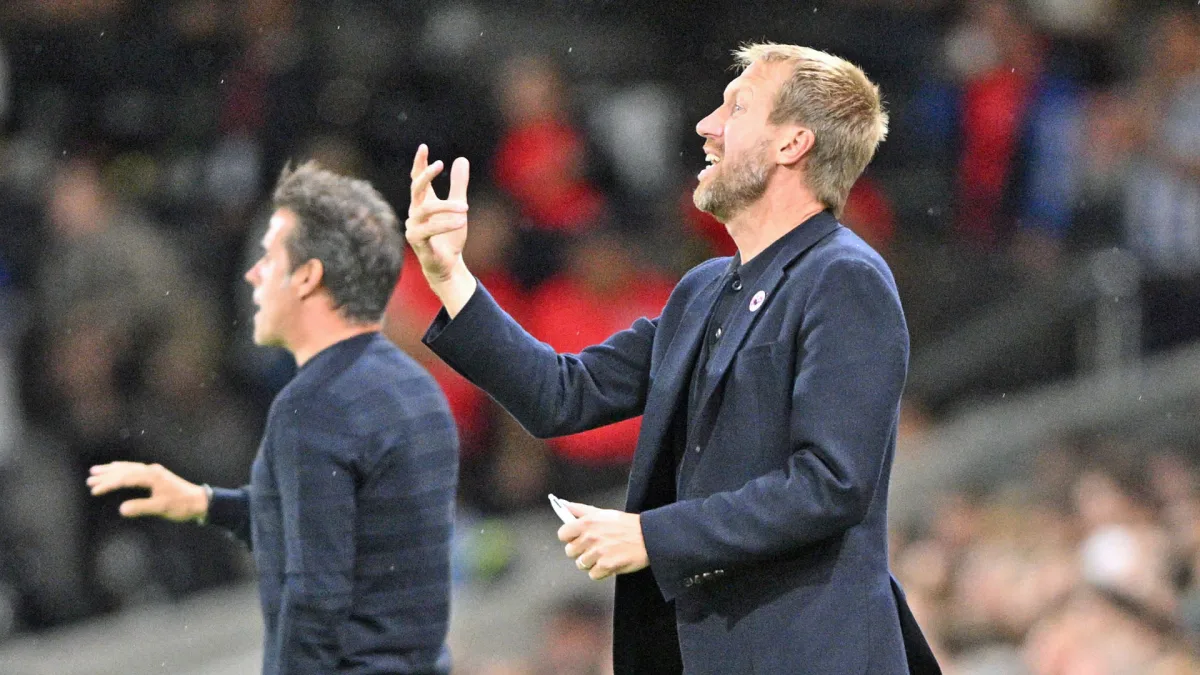
Chelsea’s decision to sack Thomas Tuchel following last week’s Champions League loss to Dinamo Zagreb caught nearly everyone off guard, but their subsequent call to appoint Brighton manager Graham Potter to the role was far more predictable.
Following the postponement of the weekend’s fixtures, Potter’s first match in charge arrives on Wednesday against Red Bull Salzburg in Europe. But how will this new Chelsea era under Potter begin?
Potter’s work at Brighton
After his playing career, Potter’s first fully professional managerial job was at Ostersund in Sweden. He made a name for himself there, taking them from the fourth tier all the way to the Europa League by virtue of winning the Swedish Cup, and playing some slick football along the way. After seven years at the club, he left for Swansea in 2018. He spent a season in the Championship, before moving to Brighton & Hove Albion prior to the 2019/20 season.
That was Brighton’s third season in the Premier League since their first-ever promotion. The Seagulls had just about survived in the first two campaigns by playing a very direct and defence-oriented brand of football under Chris Houghton. That is the polar opposite of Potter’s favoured style of play, so he proceeded to change the side’s outlook on the pitch.
For context, Brighton’s average possession in the league in Houghton’s last season was 44.1%, and under Potter, it has always been above average. In his three full seasons in charge, their possession figures have read 51.7%, 50.7% and 54.3% chronologically.
While Potter was able to have an immediate impact on the team’s style of play, the results took quite a while to change. Brighton finished just seven points above the relegation zone in 2019/20, and although their underlying performance really improved in 2020/21, an xGD (Expected Goal Difference) underperformance of almost 20 goals left them in 16th. Their underlying numbers slightly dropped last season, but they finally started to get favourable results and finished the season in the top half of the table with a club-record 51 points.
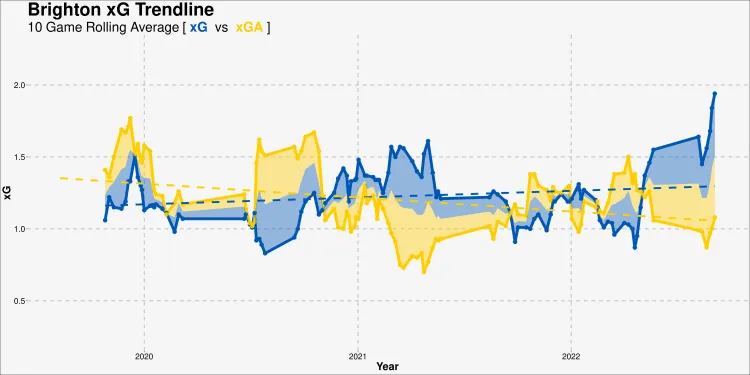
As their xG trendline over the course of the English manager’s tenure depicts, Brighton have enjoyed their best-ever start to a league season in the last few weeks, as Potter took the club to the top four before saying his goodbyes. You can, therefore, understand the disappointment among Brighton fans because they could very possibly have challenged for European football this season. Now they are left with uncertainty.
Brighton were very impressive under Potter, especially when you consider their performances in the context of the resources they had relative to the rest of the league, but our main concern is how they played.
The clearest characteristic associated with Brighton over the last few seasons is their tactical flexibility from match to match. Potter has always displayed his tactical nous and thorough understanding of the game by switching up his side’s formations and at times even style of play to suit specific opponents. It should be no surprise, therefore, that he has used 11 different formations in the Premier League.
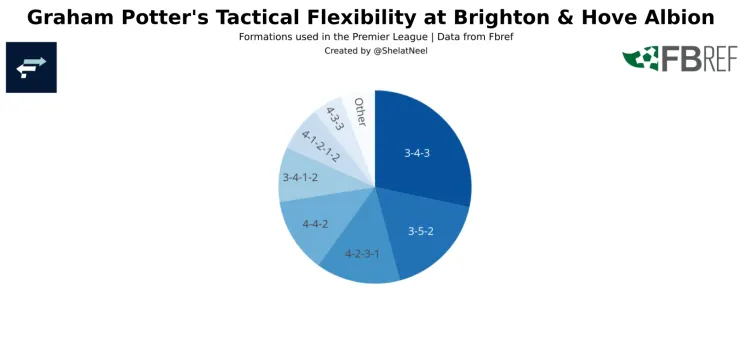
While that does a great job of showing his tactical flexibility, that also makes finding consistent tactical patterns much tougher. Looking at average positions and shapes becomes a bit of a futile exercise, so we are better off looking instead for trends in their event data.
Comparing their stats to the rest of the league, we get this pizza chart which highlights their characteristics as a possession-dominant side that was perhaps not as effective as it should have been in the final third, although that is down to their player quality more than a tactical issue.
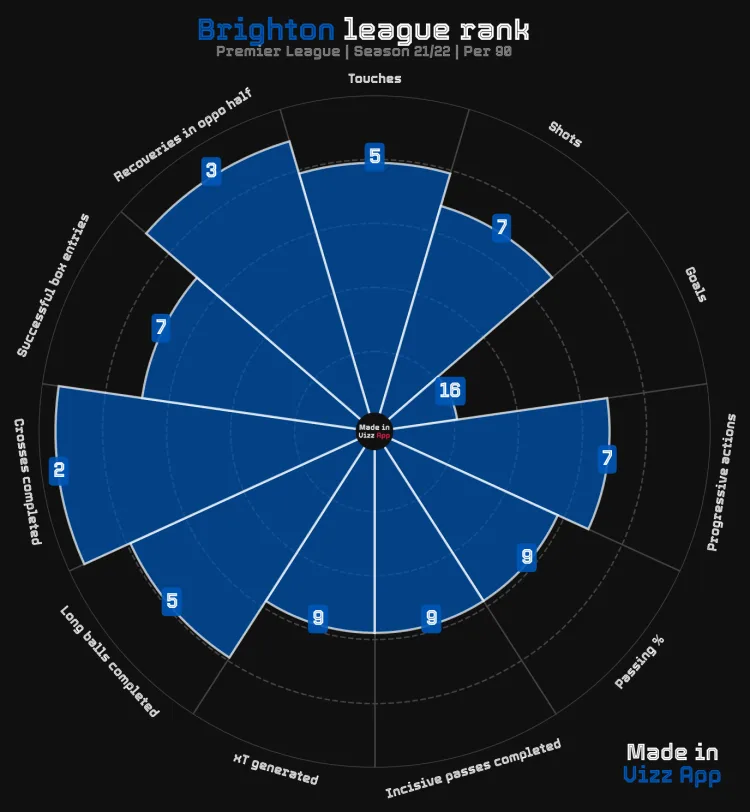
Their heatmap from last season should give us some basic ideas about what they liked to do in possession.
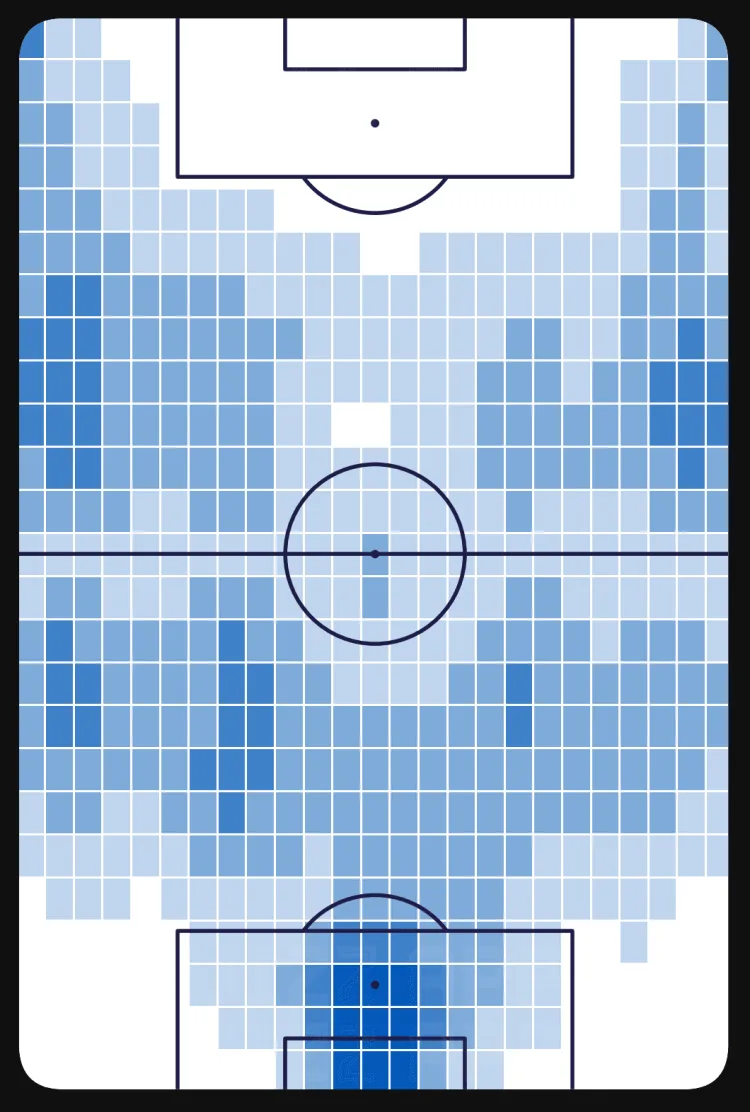
The clearest observation we can make from this is that they liked to build out from the back. There is a large cluster of activity inside the box (which is bloated by defensive actions too), and it extends to a lesser degree throughout the defensive third. In the opposition half, we can clearly see that Brighton liked to operate out on the wings and strayed away from the centre of the pitch.
Let us zoom in on these observations a little more. Looking at their progressive passes heatmap, we can clearly see their tendency to get the ball forward by using the wings.
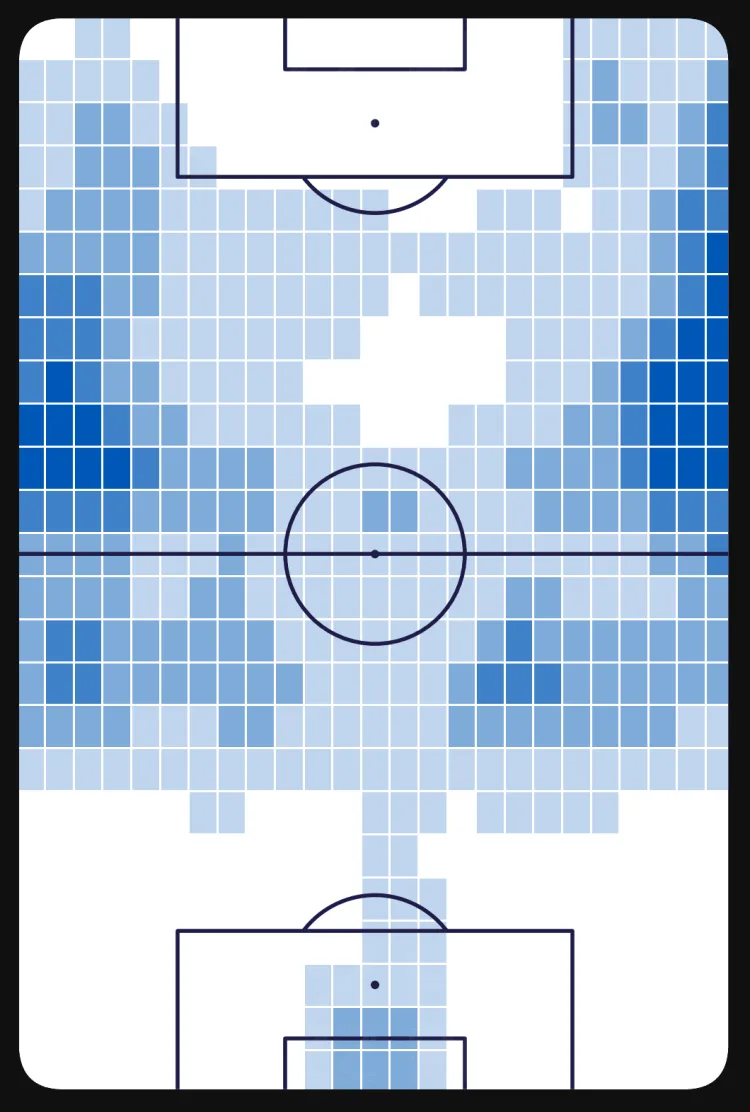
Up in the final third, Brighton’s chance creation was also focused away from the middle, mostly on either side of the box through cut-backs, but also from the wings as we saw in their team style chart that they attempted the second-most crosses in the league last season.
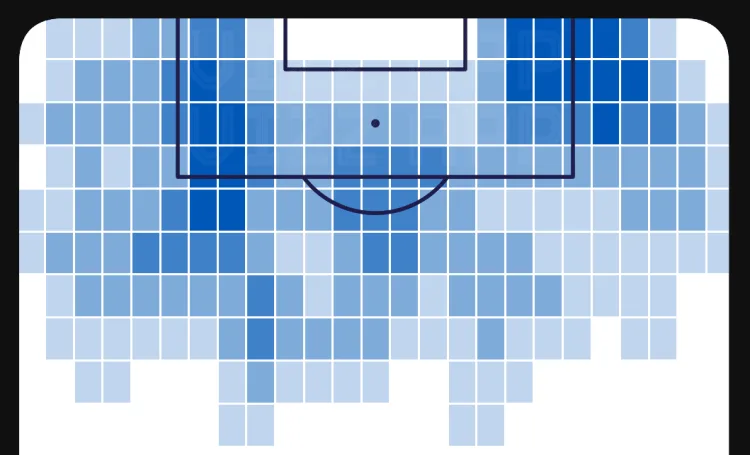
Their shooting pattern was the one thing that, thankfully, was centred around the middle, as they took some fairly good quality shots with an npxG/shot average of 0.09.
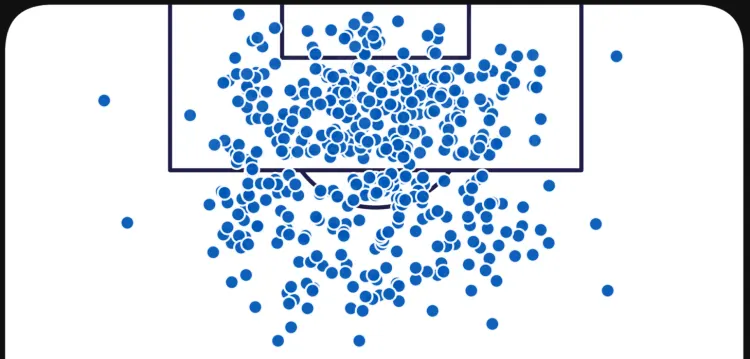
Their team style chart also showed them as one of the more proactive defensive sides in the league, which is reflected by the fact that they had the fifth-lowest PPDA (Passes allowed per defensive action) tally in the league last season at 9.37. Their pressing also generally focused on forcing the ball out wide before squeezing the player in possession, although this one of the things that really varied from match to match.
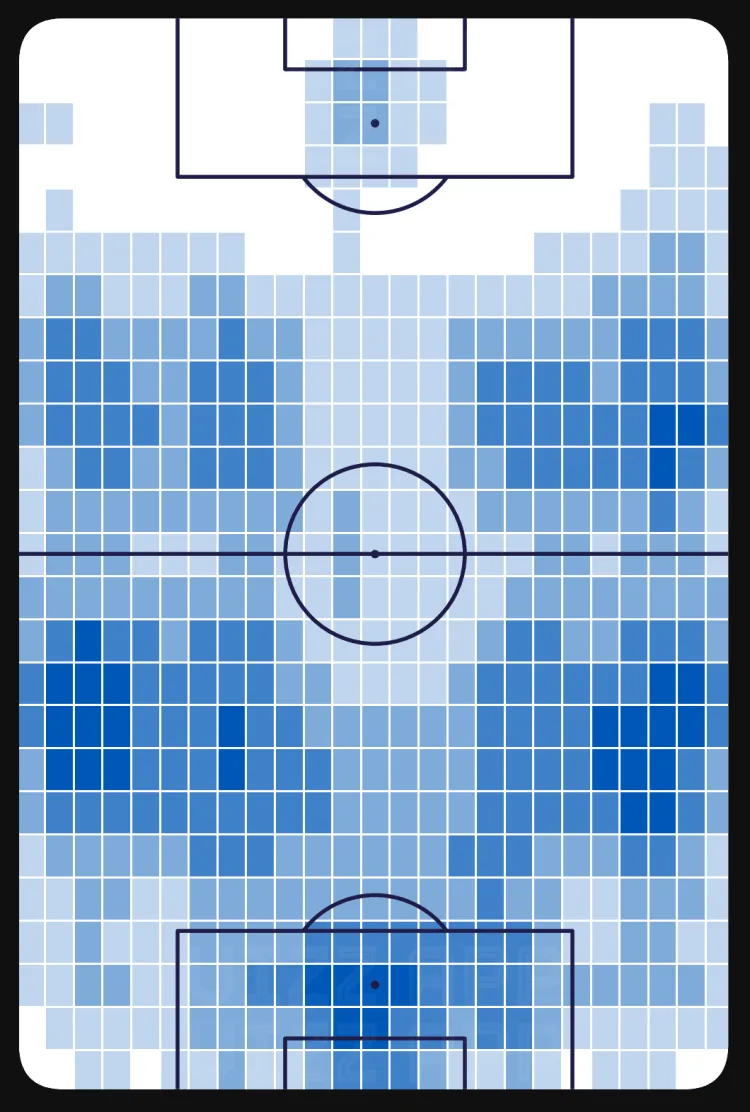
Brighton were a possession-dominant side last season that focused a lot of their play on the wings. They did disappoint with their end-product in the final third at times, but as mentioned, this is an aspect where player quality can really make the difference, and it is safe to say that man for man, Brighton have one of the less impressive squads in the league.
How Chelsea might look under Potter
Due to Potter's tactical flexibility, it is hard to be certain of what formation he will use at Chelsea, but we should expect the overall patterns seen at Brighton to continue. That means his side will continue to look to dominate possession, and could well focus especially on the wings while going forward. This is good news for Chelsea, as they too focused heavily on attacking through the flanks under Tuchel in his preferred 3-4-2-1 formation.
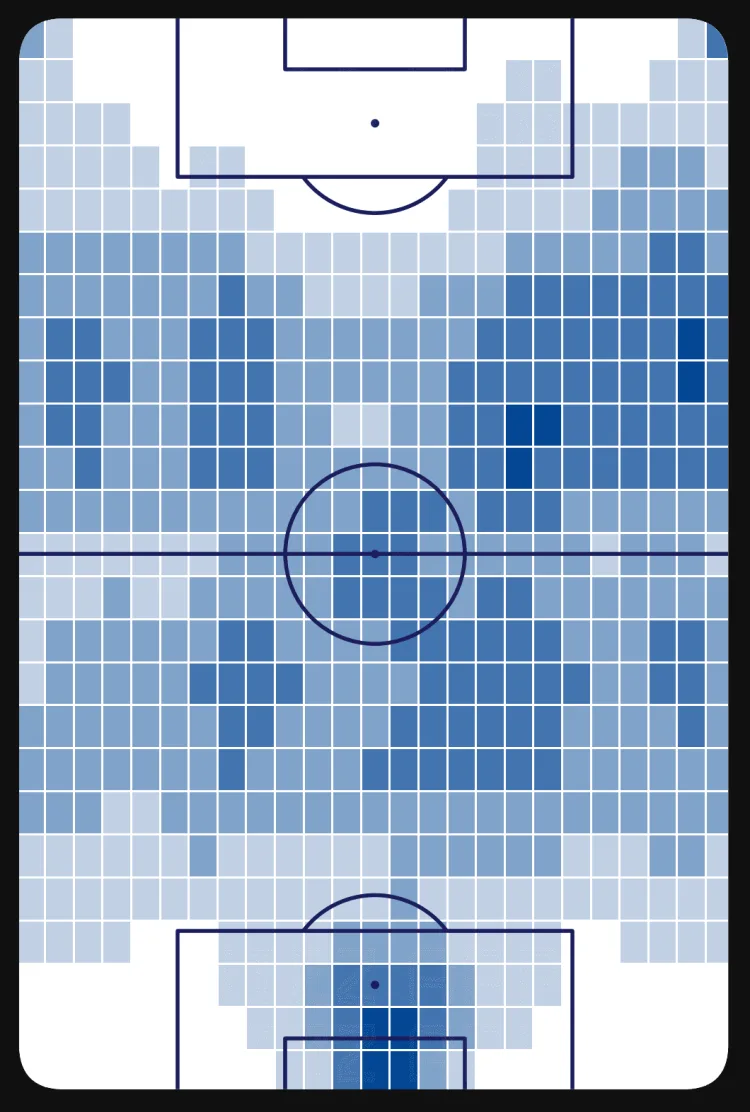
One of Potter's strengths is that he is very good at understanding the strengths and weaknesses of every player, and uses that knowledge to create a system that gets the best out of the squad. At present, Chelsea's squad is obviously constructed to play a back-three system as that was Tuchel's favoured formation. Looking at their squad, we see that they have great depth in the centre-back department, their wide defenders are better off as wing-backs, they slightly lack depth in defensive midfield, but most worryingly, they are really short on attackers. Potter is used to working without strikers from his time at Brighton, though, so he should be able to make do with what he has for now.
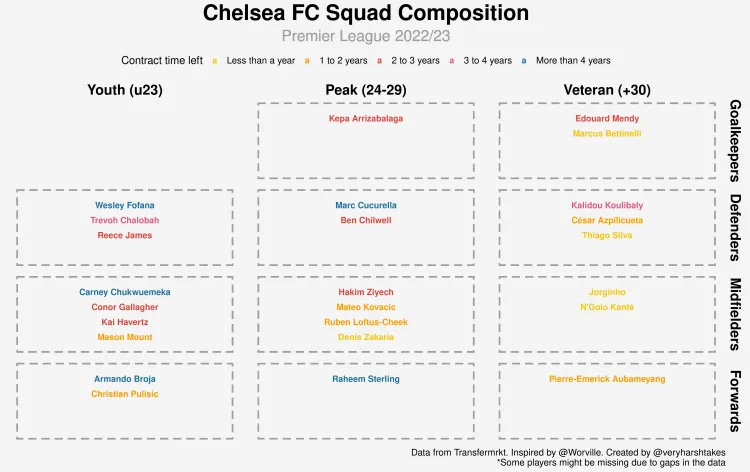
The previous pie chart of the formations used by Potter in the Premier League did show that he too appeared to lean towards back-three systems at Brighton, so he should be able to construct a strong system quite quickly.
The only major question mark surrounding Potter's move to Chelsea is whether he will continue to be able to tweak his side's tactics from game to game as he did at Brighton. One of the issues here is that this sort of approach requires excellent understanding and buy-in from all the players, which is easier to achieve at a club like Brighton than at a team of the size of Chelsea. On the other hand, though, it is important to note that a large part of the reasoning behind Potter altering his game plans for different opponents was the fact that he was trying to mask a qualitative weakness among his players, which is not something he will have to worry so much about with the Blues’ star-studded squad.
Chelsea’s signing of Potter is about as sure a bet as a new managerial appointment could be. They are bringing in a very intelligent and proven tactician who is used to working on a tight budget, so he could well make himself look even better with the vast resources at his disposal now. Given a bit of time and support, Potter will certainly bring success to Stamford Bridge.

